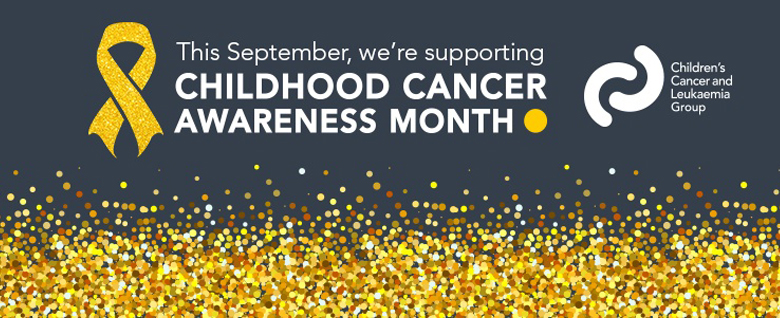September is Childhood Cancer Awareness Month. Getting cancer whilst you are a child can have a devastating impact on your development and your family and friends' lives. Instead of a child going to school, making friends and learning new skills and hobbies, they sometimes have to spend a lot of time in hospital or at home and have to have a number of operations and medications.
In the UK, 4,500 children and young adults are diagnosed with cancer each year. Thankfully, survival has increased dramatically over the past 50 years and now four out of five children and young adults can be successfully treated. However, awareness, education and support are still vital for both the children themselves and their families and friends.
The types of cancer that affect children are different from the cancers that affect teenagers, young adults or adults.
One particular cancer that I have come across is Neuroblastoma. This is a cancer that mostly affects babies and children under five years of age. It develops within nerve cells that are left behind from the baby’s development in the womb. The cause of this cancer is currently unknown.
Neuroblastoma most commonly occurs within one of the adrenal glands within the child’s abdomen, which can make it difficult to detect. The early symptoms of Neuroblastoma can also often be vague and hard to spot. Babies or very young children are unable to explain their symptoms and so doctors have to rely upon the parents’ observations and any physical signs of any problems. This can often lead to Neuroblastoma being mistaken for more common childhood conditions.
Symptoms of a Neuroblastoma include:
- Loss of appetite
- Tiredness
- A swollen and painful abdomen
- A lump in the neck
- Blueish lumps in the skin and bruising
- Pain in the bones
- Weakness in the legs
- Difficulties swallowing and breathing.
Neuroblastoma can be diagnosed through blood, urine or bone marrow tests, x-rays, CT, MRI or mIBG Scans (which involves an injection of a substance which us taken up by neuroblastoma cells).
Once it has been diagnosed, it can be treated through surgery, chemotherapy, radiotherapy, a stem cell transplant, immunotherapy or dinutuximab beta (this is a new medicine, which is available through the NHS, that can be used when the neuroblastoma is thought to be likely to recur).
The treatment required depends upon the age of the child, whether the cancer is only in one place, the size of it and whether it has spread to other areas of the body.
Sadly, Neuroblastoma has one of the lowest survival rates of all childhood cancers. However, there is lots of research being done and quite often children with Neuroblastoma are asked to participate in clinical trials.
For more information, please visit the following websites:
Children's Cancer and Leukaemia Group
If you or a loved one has suffered an injury due to the negligence of a medical or health professional then we may be able to help you pursue a claim for compensation. Our leading team of medical negligence experts are on hand to offer advice, so please get in touch with us on 0161 696 6165 or complete our online enquiry form and we will contact you directly.




Comments